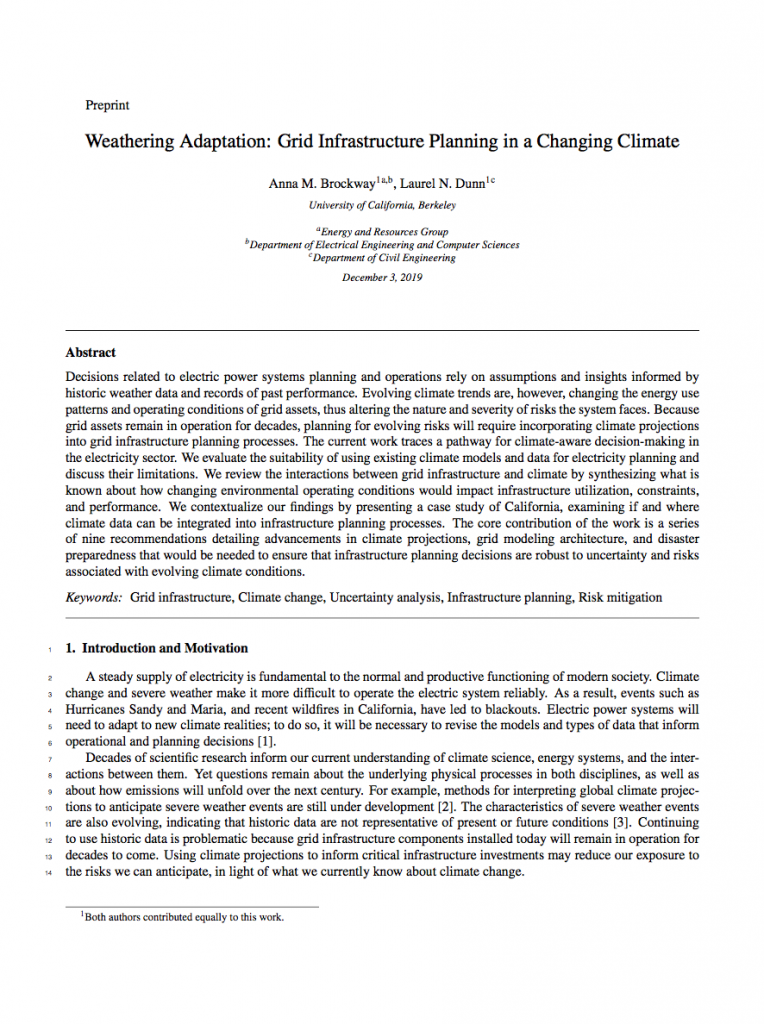
What we work on
Some of the basic questions we work on are: (1) How can future power systems be made sufficiently flexible to accommodate very large penetrations of wind and solar generation? (2) How does distributed renewable electricity generation impact the operation and economics of low voltage distribution systems? (3) What is the value of energy storage in large-scale power systems? (4) What energy efficiency opportunities can be identified with electricity consumption data alone?
Our work ranges from applied to theoretical. Sometimes we use third party simulation platforms; sometimes we build our own simulation tools. Much of our work focuses on building new control and optimization frameworks to facilitate the operation of low carbon grids. We are increasingly working with “big data” – especially electricity consumption and solar production data – and building tools and algorithms to process and infer policy-relevant information.
Research resources
This is a link to our research github pages.
Duncan’s google scholar site is here.
Current white papers

Weathering Adaptation: Grid Infrastructure Planning in a Changing Climate (pdf)
Abstract. Decisions related to electric power systems planning and operations rely on assumptions and insights informed by historic weather data and records of past performance. Evolving climate trends are, however, changing the energy use patterns and operating conditions of grid assets, thus altering the nature and severity of risks the system faces. Because grid assets remain in operation for decades, planning for evolving risks will require incorporating climate projections into grid infrastructure planning processes. The current work traces a pathway for climate-aware decision-making in the electricity sector. We evaluate the suitability of using existing climate models and data for electricity planning and discuss their limitations. We review the interactions between grid infrastructure and climate by synthesizing what is known about how changing environmental operating conditions would impact infrastructure utilization, constraints, and performance. We contextualize our findings by presenting a case study of California, examining if and where climate data can be integrated into infrastructure planning processes. The core contribution of the work is a series of nine recommendations detailing advancements in climate projections, grid modeling architecture, and disaster preparedness that would be needed to ensure that infrastructure planning decisions are robust to uncertainty and risks associated with evolving climate conditions.
Tools
An interactive map that allows users to compute the cost of reliability for standalone solar systems. You can find the paper we wrote about the tool here.
